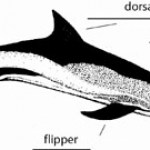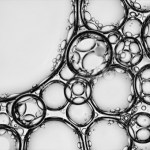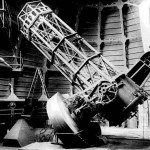bubbles
Gray's paradox was originated by the zoologist James Gray in 1936 (J. Exp. Biol. 13: 192–199, 1936). The paradox questioned how a dolphin is able to swim fast (~10.1 meters per second according to his calculations) with what he saw as a limited ability to generate that much power. Therefore, he concluded that dolphins must have some mechanism or adaptation to reduce drag (Davidson College).
More recently, Dr. Frank Fish (West Chester University, Pennsylvania) was quoted in The Scientist saying, “To resolve the paradox was to assume that flow over the dolphin’s body is laminar,…
tags: soap bubble science, physics, science, surface tension, Keith Johnson, streaming video
This is a really interesting video about soap bubbles -- how they work and what we can do with them. The slow motion footage of a bursting bubble is especially interesting to watch.
Sometimes art doesn't need to be complicated. Shawn Knol's simple videos of oil in water capture fascinating patterns reminiscent of dividing cells, budding spores or lava lamps, depending on your mood. His newest, Psycho Bubble (above), was just released a few days ago.
"A lot of people are asking how I did this. It's pretty simple. I just put the camera on its lowest jpeg setting, placed the camera into continuous mode, and locked the shutter down with my wired remote. The oil is being dumped into a tall cylindrical glass, with about a cup of water in it. The whole thing is lit from…
When you pour a beer, there is this foamy top called the head. The size of the head decreases over time. What is this process dependent on? Clearly, little bubbles of beer are popping. Does each bubble have an equal probability of popping? Do only the bubbles on the top (or bottom) pop? I became aware of this idea from a colleague. Maybe he was going to do an analysis, but I haven't seen it yet. If you do (Gerard), I am sorry for doing this before you. This may have been investigated before, but in the spirit of re-doing everything I have not searched for previous beer head studies.…
Something Rich and Strange
Jessica Palmer, 2008
Merry Christmas and Happy Hanukkah from Bioephemera!
A big thank you to everyone who reads and comments on my blog - you are why I do this. Enjoy your holiday and have a wonderful New Year!
Jess
I was doing a little research into the history of telescopes, and it was about a century ago that they finally realized how much more potential light-gathering power reflecting telescopes had as compared to the older refracting telescopes. On Mt. Wilson in California, astronomer George Ellery Hale and optician George Willis Ritchey (back then everybody was named George -- look it up!) were embarking on a program to build large reflecting telescopes as the wave-of-the-future of Astronomy.
But even before this telescope was operational, Hale and Ritchey were thinking of bigger and bigger…


